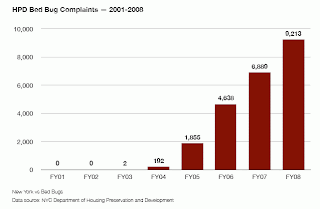
It occurs to me that every other profession in the world has holiday gift list blogs, so why not pest control? If I was more organized (and female) I would have posted this blog two months ago, but I figure better late than never. Guys, you can add these ideas to next year's wish list.
I have at least a few ideas. One I saw at last week's Entomological Society of America's annual meeting was an affordable, portable microscope. Now it's only 20X, but I like it better than the little Radio Shack "microscopes" that turn your images upside down and backwards. It is sold by BioQuip Products for $85. It is a binocular dissecting scope similar to most microscopes used by professional entomologists, so it allows for 3-dimensional viewing. A 20X scope is not adjustable (my office Wild scope is adjustable and goes from 6X to 50X), but it should be adequate for most field identification tasks. Also nice about this item is that it has a battery-powered light, making the unit truly portable.
I've decided not even to try and describe the next idea, but if your taste runs to the creative and and you want a really unique gift check out http://www.insectlabstudio.com/?item/291 Suffice to say that you will have to see these pieces of art to believe them.
If you're into artistry in knives, the Tom Anderson "Termite" knife is a nice idea. My friend Grady Glenn gave me one of these knives a year ago and they are pretty cool. Designed to look like a termite, with segmentation, an eye and antennae, this knife makes a nice conversation piece as well as proving handy during termite inspections.
And I believe it's true that nobody in pest control can have too many flashlights. I just got a new mini Maglite LED flashlight which I think is great. It's bright and focusable light is adequate for indoor and outdoor use. It comes with belt holster and is so light you don't know you have it on--a huge improvement over my last model, which doubles as a self-defense weapon, and whose batteries need frequent replacement. Also, for you who have a need to fluoresce rodent urine or scorpions, Streamlight TwinTrak has a flashlight that cycles between white and UV lights, a nice feature.





